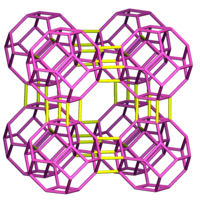Molecular sieve

A molecular sieve is like a very tiny strainer that is used to separate molecules of different sizes. It is made up of very small beads that have tiny pores or holes in them, just like a sponge has little holes.
Molecules are tiny particles that make up everything around us, like air, water, and even the clothes we wear. But not all molecules are the same size, and sometimes we need to separate them. A molecular sieve helps do just that by trapping the larger molecules in its pores while allowing the smaller ones to pass through.
Imagine you have a basket of toys consisting of different sizes - big ones and small ones. If you try to pour water into the basket, the smaller toys will pass through the spaces between the larger toys but the bigger toys will block the water. Molecular sieve works in a similar way.
Molecular sieves are used in many applications, such as drying air, purifying liquids, and even separating gases. For example, if we want to remove water from a gas like natural gas, we can pass the gas through a molecular sieve that has pores that are just the right size to trap the water molecules, leaving behind dry gas.
In summary, a molecular sieve is a tiny strainer-like substance made up of small beads with tiny holes in them. It can separate molecules of different sizes, allowing the smaller ones to pass through while trapping the larger ones in its pores.
Molecules are tiny particles that make up everything around us, like air, water, and even the clothes we wear. But not all molecules are the same size, and sometimes we need to separate them. A molecular sieve helps do just that by trapping the larger molecules in its pores while allowing the smaller ones to pass through.
Imagine you have a basket of toys consisting of different sizes - big ones and small ones. If you try to pour water into the basket, the smaller toys will pass through the spaces between the larger toys but the bigger toys will block the water. Molecular sieve works in a similar way.
Molecular sieves are used in many applications, such as drying air, purifying liquids, and even separating gases. For example, if we want to remove water from a gas like natural gas, we can pass the gas through a molecular sieve that has pores that are just the right size to trap the water molecules, leaving behind dry gas.
In summary, a molecular sieve is a tiny strainer-like substance made up of small beads with tiny holes in them. It can separate molecules of different sizes, allowing the smaller ones to pass through while trapping the larger ones in its pores.
Related topics others have asked about:
